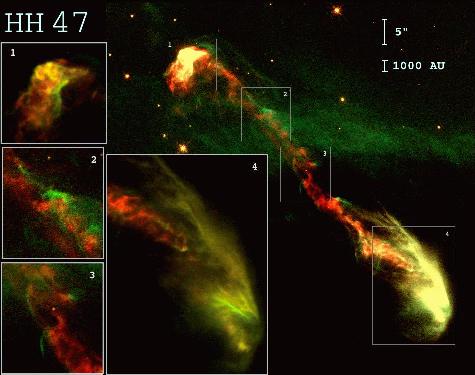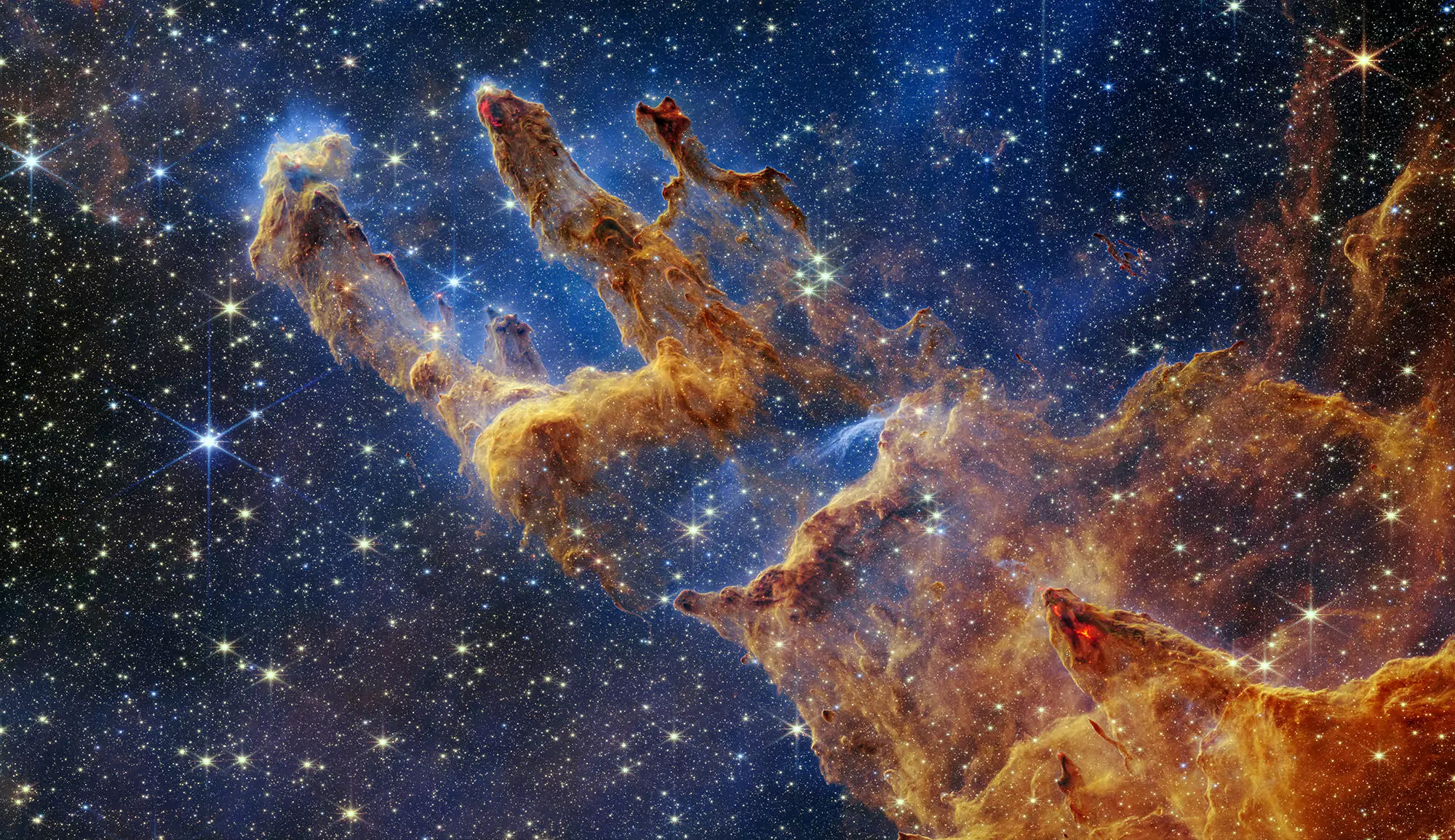
Figure 1 : Image of the Herbig Haro 47 jet, taken with the Space Telescope. © HST. NAS/ESA. Click on the image to enlarge it
To study the dynamics and the structure of these jets and the origin of these curves, the international team of researchers has just carried out a double approach : the experiment in laboratory and the numerical simulation. As regards the experiment in laboratory, the experimental jets were produced on the generator of pulsated current MAGPIE of the Imperial College. The experimental jet has the required characteristics of HH jets in young stars, but with time scales and distances different, of the order of nanoseconds and centimetres. The typical propagation velocity is about 100 to 200 km/s. The interaction of this experimental jet with a lateral wind (30 to 50 km/s) is obtained thanks to a ablation plasma generated on a sheet by a strong XUV radiation. With regard to the numerical simulation, the virtual astrophysical jet was obtained with typical parameters of the stellar jets, for example with flow times of hundreds of years and distances equivalent to hundreds of astronomical units (an astronomical unit = 150 million km).


An important result is that the structure observed in the "pseudo HH jet" and the destruction of the bow shock result only from the interaction with the wind and are not related to some variability of the injection of the jet. It is the same for the internal shocks. The jet is prone to instabilities which tend to separate the jet in filaments.
Figure 3 : Simulation of an astrophysical jet (100 km/s, 1 000 particules per cm3) interacting with a latéral wind ( 25 km/s, 100 particules per cm3 ). The scale is 2 004 x 4 864 astroomical units. © LERMA. SNL. BLIC. Click on the image to enlarge it
Reference
- A. Ciardi (LERMA, Meudon), D.J. Ampleford (Albuquerque, USA), S.V. Lebedev (London, UK), C. Stehle (LERMA, Meudon) Curved Herbig-Haro Jets : Simulations and Experiments Preprint in Astrophysical Journal

